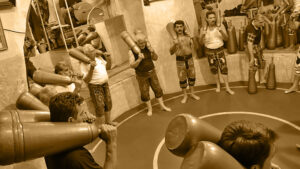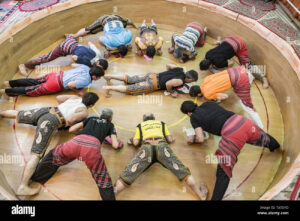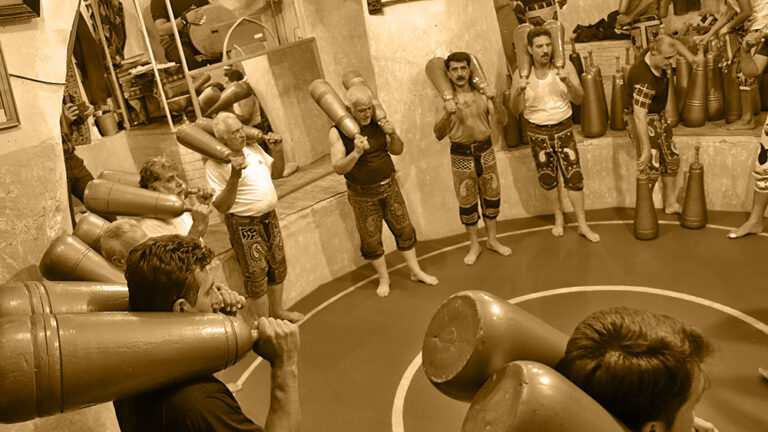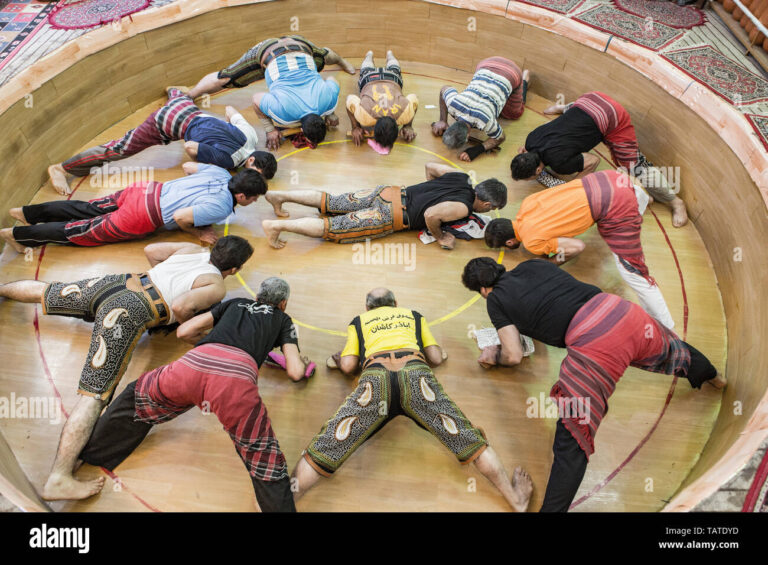Elevate Your Game with These Essential Fitness Strategies
So, you’ve decided it’s time to elevate your game. Whether you’re an athlete aiming for the podium, a weekend warrior chasing personal records, or someone who simply wants to keep up with the kids, the right fitness strategies can make all the difference. Remember the days when you could just lace up your sneakers and hit the field? Well, as we grow older (and let’s face it, a little creakier), it becomes increasingly clear that a thoughtful approach to fitness is essential.
In this article, we’ll explore a variety of fitness strategies that can help you enhance your performance, reduce the risk of injury, and keep you motivated on your journey. Drawing from personal experiences and expert insights, I aim to provide you with a comprehensive guide that’s as informative as it is enjoyable to read. So, grab a protein bar, sit back, and let’s dive in!
Understanding the Foundations of Fitness
Before we jump into specific strategies, it’s vital to understand the foundations of fitness. Think of it as the bedrock on which you’ll build your athletic prowess. In essence, fitness encompasses several components, including:
- Cardiovascular endurance: This is your body’s ability to sustain prolonged physical activity. It’s what allows you to run that extra mile or finish that intense game of soccer.
- Muscle strength: Strong muscles help you perform daily activities more efficiently and are critical in nearly every sport.
- Flexibility: This often-overlooked component aids in injury prevention and keeps you agile on the field or court.
- Body composition: A healthy ratio of fat to lean mass can play a significant role in overall performance.
- Balance and coordination: These skills are crucial in almost every sport, from football to gymnastics.
Now, with this foundation in mind, let’s jump into some essential strategies that will elevate your fitness game.
1. Set SMART Goals
Ah, goals. We all have them, but how often do we set them effectively? Enter the SMART framework: Specific, Measurable, Achievable, Relevant, and Time-bound. This approach transforms vague aspirations into actionable plans.
For instance, instead of saying, “I want to run faster,” a SMART goal would be, “I will reduce my 5K time by one minute in the next three months by training three times a week.” I remember when I first started running seriously; I set a goal to finish a half-marathon. It was only when I broke that down into smaller, SMART objectives that I actually made progress.
2. Develop a Balanced Training Routine
Here’s where the fun begins. A well-rounded training routine should incorporate various types of workouts. Think of it as building a buffet of fitness options—you don’t want to feast on just one dish!
Your training program might include:
- Aerobic workouts: Running, cycling, swimming—choose your poison! Aim for at least 150 minutes of moderate aerobic activity each week.
- Strength training: Incorporate resistance exercises at least twice a week. This can be anything from lifting weights to using resistance bands or bodyweight exercises like push-ups and squats.
- Flexibility and mobility work: Don’t skip stretching! Incorporate yoga or dedicated stretching sessions to improve your flexibility and reduce muscle tension.
- Rest and recovery: Yes, rest days are just as important as training days. They give your body time to heal and grow stronger.
When I first started cross-training, I thought I could just run and lift weights—what more could I possibly need? But it struck me that incorporating yoga not only improved my flexibility but also calmed my racing thoughts. Who knew downward dog could be a game-changer?
3. Nutrition: Fueling Your Performance
Here’s a truth bomb: you can’t out-train a poor diet. Nutrition plays a crucial role in athletic performance. It’s like putting premium gas in a high-performance sports car—you want to make sure you’re fueling your body with the best possible ingredients.
Consider the following tips to optimize your nutrition:
- Eat a variety of foods: Aim for a colorful plate—fruits, vegetables, lean proteins, whole grains, and healthy fats. Each color represents different nutrients your body needs.
- Hydrate: Don’t underestimate the power of water. Staying hydrated is critical for peak performance. Some studies suggest that even a 2% drop in hydration can impair performance.
- Timing is key: Fuel up before workouts with carbohydrates and protein, and replenish with a balanced meal afterward. I can’t tell you how many times I’ve skipped post-workout nutrition, only to feel like a deflated balloon later on.
- Listen to your body: Everyone’s nutritional needs are different. Pay attention to how your body reacts to certain foods and adjust accordingly.
4. Incorporate Cross-Training
Have you ever felt like you’re in a training rut? It happens to the best of us. Cross-training is a fantastic way to shake things up and work different muscle groups without the risk of overuse injuries. If you’re a runner, try cycling or swimming; if you’re a weightlifter, consider adding yoga or Pilates into the mix.
Cross-training not only helps with recovery but also enhances overall performance. The beauty of it is that it keeps things fresh and exciting. I personally remember the first time I swapped my running shoes for a pair of cycling cleats. It was a challenge, but boy, did it whip my body into shape!
5. Prioritize Recovery
Let’s chat about recovery—arguably the unsung hero of fitness strategies. After all, what good is a training regimen if you’re not allowing your body to recover? Recovery is where the magic happens, folks! This is when your muscles heal and grow stronger.
Here are some recovery strategies worth considering:
- Get enough sleep: Aim for 7-9 hours of quality sleep each night. I often find that my best workout days are preceded by nights of solid sleep—who knew?
- Active recovery: Engage in low-intensity activities like walking, swimming, or yoga on rest days. It keeps the blood flowing and helps alleviate muscle soreness.
- Foam rolling and stretching: Incorporate self-myofascial release techniques to ease muscle tightness and improve flexibility.
- Nutrition: As mentioned earlier, refueling after workouts is crucial. Don’t skimp on those post-workout snacks!
6. Stay Motivated and Accountable
Let’s be honest: some days, even the most dedicated athletes struggle to lace up their shoes. Motivation can wane, and that’s perfectly normal. The key is to find ways to keep the fire burning. Here are some strategies that have worked for me:
- Find a workout buddy: There’s nothing like the camaraderie of sweating it out with a friend. You’ll be less likely to skip a session if someone is counting on you!
- Track your progress: Keep a journal or use fitness apps to log your workouts and celebrate milestones. I once hit a PR in the middle of a workout and nearly burst with joy—documenting that moment made it all the sweeter.
- Set new challenges: Whether it’s a local race, a new sport, or a fitness class, setting fresh goals can reignite your passion for fitness.
- Join a community: Engage with like-minded individuals, whether online or in person. Surrounding yourself with others who share your goals can be incredibly motivating.
7. Mindfulness and Mental Training
Now, let’s not forget about the mental aspect of fitness. A strong mind often translates into a strong body. Integrating mindfulness practices can improve focus, reduce anxiety, and enhance your overall performance. Here’s how:
- Meditation: Even just a few minutes of focused breathing can help clear your mind and prepare you for a workout.
- Visualization: Picture yourself achieving your goals—whether it’s crossing the finish line or hitting a personal best. It’s incredible how powerful the mind can be.
- Positive affirmations: Use affirmations to boost your confidence and self-belief. I often tell myself, “I am strong, capable, and ready,” before races. It sounds cheesy, but hey, it works!
8. Listen to Your Body
As you embark on your fitness journey, it’s crucial to listen to your body. Ignoring signs of fatigue or pain can lead to injuries—something no one wants. I’ve been there, pushing through discomfort, only to find myself sidelined for weeks. Trust me, it’s not worth it.
Your body is your best coach. If something feels off, don’t hesitate to take a step back. It’s okay to adjust your routine based on how you’re feeling. Remember, fitness is a marathon, not a sprint!
9. Embrace the Journey
Finally, let’s talk about embracing the journey. Fitness is not just about the destination; it’s about enjoying the process. Celebrate your achievements, big and small, and don’t be afraid to laugh at your missteps along the way. (I’ve had my fair share of workout fails—like that time I tried to impress my friends with a pull-up and ended up just hanging there like a human ornament.)
It’s essential to maintain a positive outlook. Fitness is a lifelong commitment, and the more you enjoy it, the more likely you are to stick with it. So, find what makes you happy and run with it—literally!
Conclusion: Elevate Your Game
In conclusion, elevating your game requires a multifaceted approach that encompasses goal-setting, balanced training, nutrition, recovery, motivation, mental training, and most importantly, listening to your body. Each of these strategies is a piece of the puzzle, and when combined, they can lead to significant improvements in your performance and well-being.
As you embark on this journey, remember that it’s not about perfection; it’s about progress. Embrace the ups and downs, the successes and setbacks. After all, every athlete’s story is filled with challenges and triumphs, just like yours. So, lace up those shoes, grab that water bottle, and get ready to elevate your game. Who knows? The next chapter of your fitness journey could be your best one yet!












